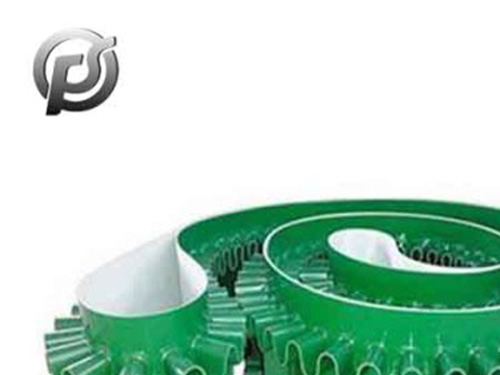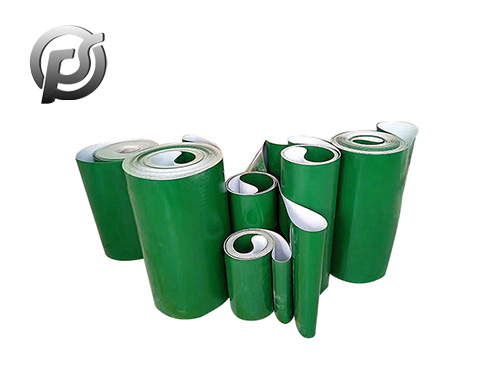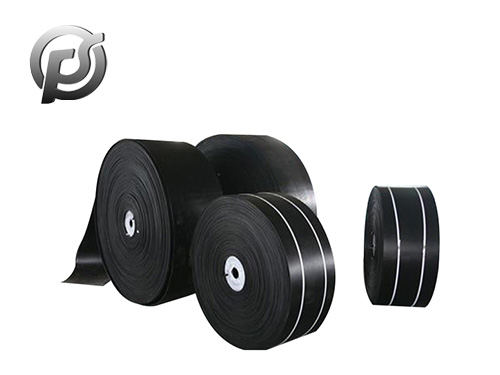(1) Contents of routine inspection and maintenance
The
belt conveyor in operation should have at least 2~4h centralized inspection and maintenance time every day. The contents of daily inspection and maintenance are as follows:
(1) Whether the operation of the conveyor belt is normal, whether there are abnormal phenomena such as card and bias, and whether the conveyor belt joint is flat and straight.
(2) Whether the upper and lower idlers are complete and whether the rotation is flexible.
(3) Conveyor parts are complete, bolts are tight and reliable.
(4) Whether the temperature of the reducer, coupling, motor and drum is normal or not.
(5) Whether there is leakage of reducer and hydraulic coupler, and whether the oil level is normal.
(6) Whether the conveyor belt tensioning device is in good condition.
(7) Whether the working condition of each part of the cleaner is normal.
(8) Check and test various safety protection devices.
(9) Check whether the electrical equipment (including cables, etc.) is in good condition.
(10) Fill in the daily inspection record carefully.
If there is any abnormal situation in the above inspection, it should be arranged for maintenance immediately to remove the fault in time.
(2) Contents of drivers' inspection circuit
Tour inspection of drivers is an important system, the key content of tour inspection is
(1) Whether the temperature of each heating part exceeds the specified requirements.
(2) Whether the braking system works normally and whether the clearance meets the requirements.
(3) The motor and the reducer run with abnormal sound.
(4) Whether the conveyor belt tension is appropriate.
(5) Whether there is abnormal deviation of conveyor belt during operation.
(6) Whether the safety protection device is reliable.
(7) Whether the fire waterway is unimpeded.
(8) Whether the signal device is normal.
(3) Matters needing attention when inspecting and maintaining the belt conveyor
(1) Protective covers and protective railings should be set at the rotating parts of belt conveyor driving device, hydraulic coupler, driving drum, tail drum, etc., to prevent the occurrence of stranded accidents.
(2) staff dress to sharp, cuff, skirt to tie tight.
(3) During the operation of the belt conveyor, it is forbidden to use shovels and other tools to scrape the coal slime on the conveyor belt or use tools to correct the conveyor belt that runs off course, so as to avoid personal accidents.
(4) After the conveyor stops operation, the power supply must be cut off. Do not cut off the power supply, no maintenance. No one is allowed to power on when there is a sign that says "Someone is working, no power transmission".
(5) When replacing the conveyor belt and making the conveyor belt joint, it is really necessary to move the car or pull the conveyor belt by manpower, the personnel should stay away from the conveyor belt; It is strictly prohibited to pull or step on the conveyor belt directly by hand.
(6) When making connections to the conveyor belt, it must be far away from the head rotating device 5m away, and send special personnel to stop the machine, power off, and hang the power off plate before operation.
(7) When coal is stuck on the cleaning roller, it must stop the machine first and then clean it up. It is strictly prohibited to clean up while running.
(8) When inspecting the conveyor, special measures should be formulated. In the implementation, the staff is strictly prohibited to stand on the head, tail frame, driving drum and conveyor belt and other running parts of the work.
(9) Belt conveyor driver check whether the lubricating oil in the reducer needs to be supplemented or replaced:
(1) Remove the dipstick of the reducer and observe the scale value of the oil trace on the dipstick. If the oil level is lower than 1/2 of the radius of the big gear, it indicates that the amount of oil is less. Lubricating oil should be added so that the oil level after supplement exceeds 1/2 of the radius of the big gear.
② The coal standard MT-88 stipulates that the newly manufactured or overhauled reducer should be replaced with new oil after 250h of work, and then thoroughly cleaned and changed oil every 3~6 months.
③ Oil must also be changed when the following situations occur:
(a) When the content of foreign impurities in the oil reaches 2% and the content of worn metal particles exceeds 0.5%.
(b) when the water content of oil is greater than 2%, except for water-in-oil gear oil.
(c) when the quality of oil does not meet the requirements.
(10) The belt conveyor driver oiling the roller bearing: The roller bearing shall be loaded with No. 3 calcium-based grease equivalent to 2/3 of its volume after maintenance, and the oil injection nozzle on its bearing seat shall be oilled once a day. Clean and change the grease once every three months.
(11) Maintenance methods of belt conveyor drivers for belt belt:
(1) If conditions permit, reduce the distance between the coal feed nozzle and the belt as far as possible to slow the impact and wear of coal on the belt.
② Strictly control water, coal, large materials and iron to the belt. After the large materials and ironware that have been given to the tape are found, the machine should be stopped in time, and the large materials and ironware should be moved away from the tape before the machine is started.
③ Repair the damaged side of the belt, the longitudinal tear in the middle and the degumming part in time.
(4) If the belt joint is seriously deformed or broken, or the metal clip is deformed or damaged, it is necessary to re-connect, shape or replace the metal clip in time.
⑤ Add the necessary self-aligning support roll, anti-deviation protection, belt breaking and skid protection to ensure the normal operation of the belt conveyor, so that the belt conveyor can stop automatically in time in the accident operation, prevent the expansion of the accident, so as to protect the belt. If there is a general deviation of belt, the self-aligning bracket roller can adjust the running direction of belt. Operate belt conveyors in strict accordance with regulations.
 Stone Conveyor Belt: Enhancing Efficiency and Productivity in Material Handling
Stone Conveyor Belt: Enhancing Efficiency and Productivity in Material Handling
 Optimizing Operations with PE Conveyor Belts: Durability, Efficiency, and Versatility
Optimizing Operations with PE Conveyor Belts: Durability, Efficiency, and Versatility
 Exploring the Efficiency and Versatility of Light Conveyor Belts
Exploring the Efficiency and Versatility of Light Conveyor Belts